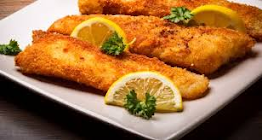MENU-1 SECOND SEMESTER
Portions: 25 Portion size: 3 oz (90 g)
Ingredients
350 ml Mayonnaise Dressing
1.8 kg Crisp, red eating apples
450 g Celery, small dice
100 g Walnuts, coarsely chopped
25 Lettuce cups
60 g Chopped walnuts
P r o c e d u r e
1. Prepare the dressing.
Place it in a large stainless-steel bowl
and have it ready in the
refrigerator.
2. Core the apples and dice
them to 1⁄2 in. (1 cm) without peeling them.
3. As soon as the apples are
cut, add them to the dressing and mix in to prevent darkening.
4. Add the celery and
walnuts. Fold in until evenly mixed.
5. Arrange the lettuce bases
as under liners on cold salad plates.
6. Place a mound of salad on
each plate.
7. If garnish is desired,
sprinkle each salad with about 1 tsp
(5 m L) chopped nuts.
8. Hold for service in refrigerator.
Cream
of Spinach (crème de Epinard)
Portions: 4 Portion size: 200ml
Ingredients
Spinach 250gms
Meat stock 750 ml
Refined flour 30gms
Butter 30gms
Milk 300ml
Salt and pepper
to taste
Method
Clean and wash spinach.
2. Cook in stock
with salt
3. Pass through a fine strainer when cooked.
4. Prepare white
sauce using flour milk and butter.
5. Add sauce to
spinach puree and mix well.
6. Season,
reheat and bring to desired consistency.
7.
Serve hot.
Fillet de poisson a la Anglaise
Portions: 6 Portion size: 125 gms
Ingredients
fillets of lean, white fish 750 gms
Flour 200gms
Egg 02
Milk 250ml
Salt to
taste
Pepper to
taste
Procedure
1.
Set up a breading station .Place the flour in one
pan, the eggs beaten with milk in a shallow bowl, and the bread crumbs in
another pan.
2. Season the
fish lightly with salt and white pepper.
3. Bread the
fish fillets by passing them through the flour, egg wash, and
crumbs. Press
the crumbs on firmly.
4. Fry the
fillets in deep fat heated to 350°F (175°C) until golden brown
5.
Drain
and serve immediately. Garnish each portion with a parsley sprig and lemon
wedge. Serve with 1 fl oz (25 mL) tartar sauce.
S Tartare Sauce Mayonnaise Sauce with hard boiled eggs garnished with finely chopped onions and chives.
S Tartare Sauce Mayonnaise Sauce with hard boiled eggs garnished with finely chopped onions and chives.
Pommes
de Terre Noisette
Portions: 4 Portion size: 125 gms
Ingredients
Potato
500gms
Oil to fry
Salt to taste
Procedure
1.
Wash, Peel and rewash potatoes. Scoop out with
scooper and blanch for two minutes in boiling salted water and drain.
2. Deep fry in
hot fat till golden brown
3.
Sprinkle with salt and serve hot.
Aubergine
Frites
Portions: 4 Portion size: 112 gms
Ingredients
Aubergines 450gms
Oil to
fry
Flour 100 gms
Flour 100 gms
Salt and pepper to taste
Procedure
1.
Cut Aubergines in thin 0.5 cm slices.
2. Season,
dredge and dust with flour. Fry in smoking oil.
3.
Dish on napkin to remove extra fat and serve crisp
and hot.




